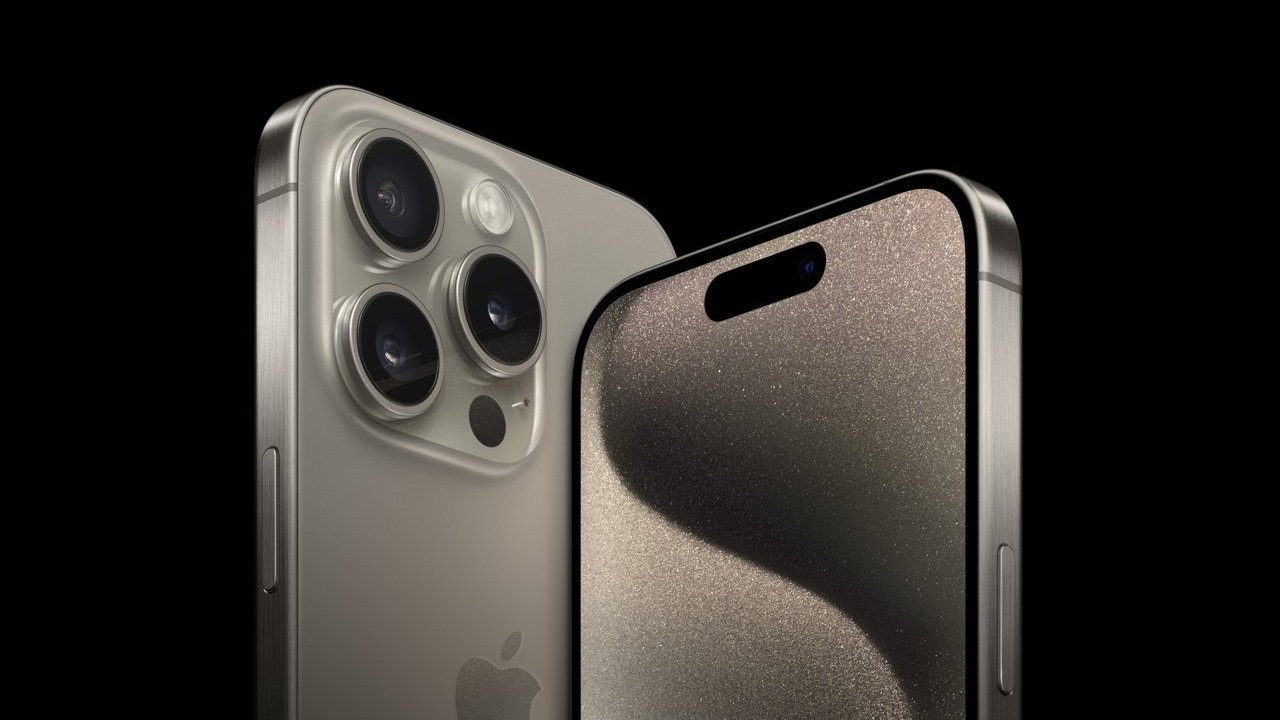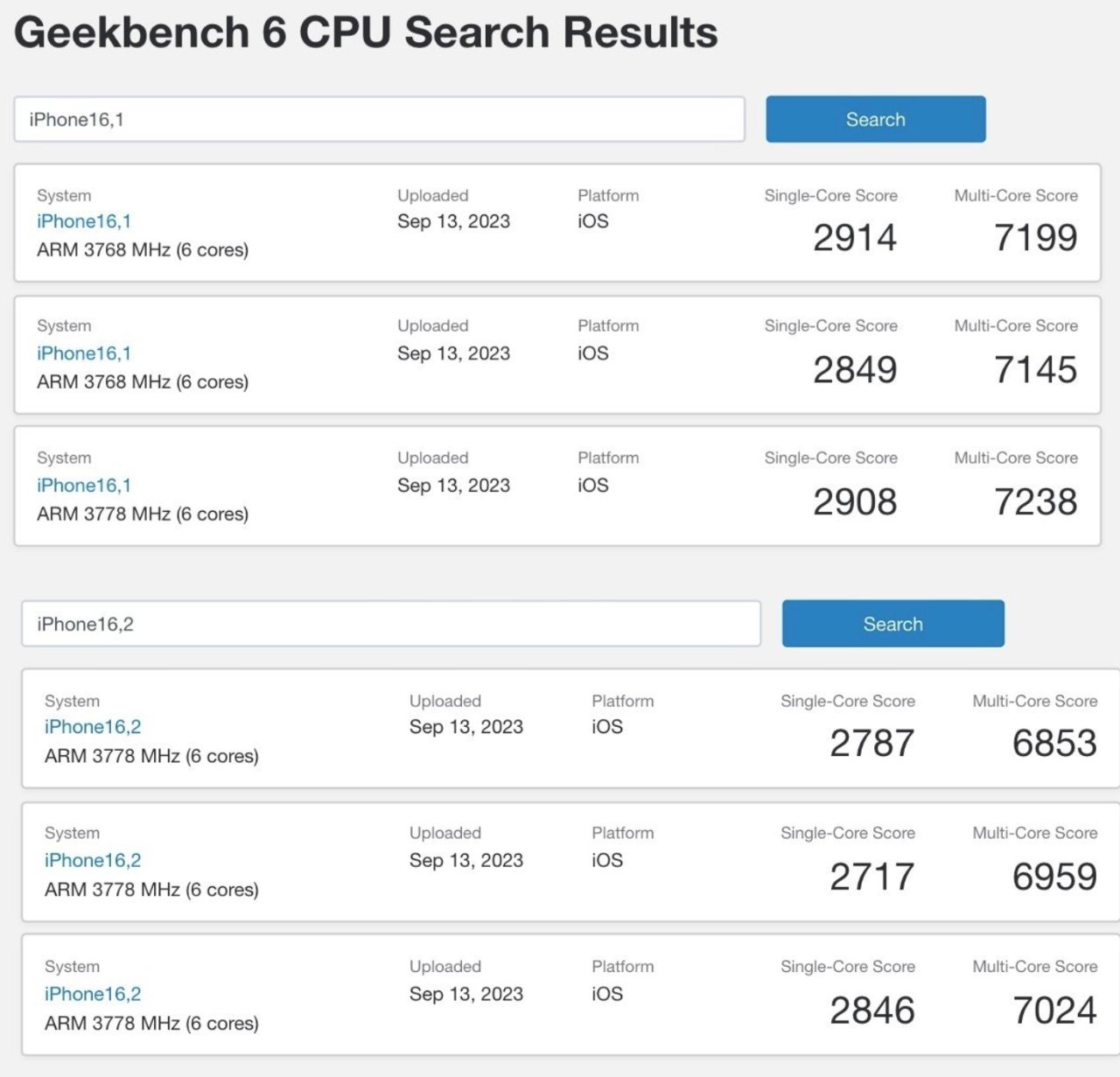iPhone 15 Pro benchmarks show big speed improvements & 8GB RAM
Initial results on benchmarking site Geekbench have confirmed that the iPhone 15 Pro has more RAM than previous models, and show a performance boost of around 10%.

Apple's new iPhone 15 Pro range
Now that the iPhone 15 Pro and iPhone 15 Pro Max have been unveiled, benchmark results have begun appearing on Geekbench and reveal both performance and specification details. Despite previous rumors, for instance, it appears that the two Pro models ship with 8GB RAM, up from the previous standard 6GB.
As first spotted by MySmartPrice, the scores show that the new A17 Pro chipset brings 10% faster performance than last year's A16 Bionic. Part of that performance boost comes from how the A17 is the first iPhone chip to be made using TSMC's 3-nanometer process.
In terms of performance, the iPhone 15 Pro -- known internally at Apple, and shown on Geekbench, as iPhone 16,1 -- scored 2908 in the single-core tests. For multi-core, it scored 7238.

Geekbench scores for the iPhone 15 Pro and the iPhone 15 Pro Max
By comparison, the iPhone 15 Pro Max -- iPhone 16,2 -- scored 2846 single-core, and 7024 multi-core.
That does mean that the smaller iPhone 15 Pro scores higher than the larger version. But it's the size that makes the difference -- the iPhone 15 Pro Max has more pixels to drive.
In either case, the new scores significantly improve on the A16 Bionic processor in the iPhone 14 Pro Max. That scored 2546 single-core and 6631 multi-core.
Read on AppleInsider

Comments
This is a CPU test, not a GPU one. I won't get a different score on my PC if I replace my 1440p panel with a 4K one.
The Apple/ARM architecture has a great number of advantages over the legacy x86 line of processors, but any illusion of these things continuing their moonshot trajectories should be dampened by reality.
Still, gains and optimizations year-over-year are still very welcome.
The number of transistors went up to 19b in A17 vs 16b in A16 so that's nearly 20% more raw hardware. iPhones don't need much CPU improvement, they benefit more from lower power and we still have to see improvements to the GPU.
For the Mac, the M3 Max was reported to have 50% more performance CPU cores. 10% more per core x 50% more cores = 65% CPU improvement vs M2 Max.
GPU cores were reported to have gone up less, around 5% more cores. If those have improved 20% per core, that's a 25% GPU boost. While that's a bit disappointing, they can add more cores for the next revisions and get another 25% boost next year.
By the last 3nm revision in 2025, they should be around 2x M2 performance before 2nm and they will do the same in 2026-2029 where 2029 Macs/iPhones are 2x 2025 models (M6-8 Max = 40TFLOPs+).
The big improvement this year will be from hardware raytracing, this is also rumored to be in the Nintendo Switch 2:
https://wccftech.com/nvidia-ampere-powered-soc-for-next-gen-nintendo-switch-2-handheld-spotted/
This will use an 8nm chip with 12GB RAM and reportedly launch next year. This iPhone can be an equivalent target for game devs.
Did they really spend tens of billions on the new 3nM process for a mere 10% speed increase and zero improvement in battery life? Something appears to have gone drastically wrong.
Where did all the benefits of the move to 3 nm go? I was expecting more. This was a 40% shinkage in the die
However, they boosted GPU performance 20% by adding an extra core. 6-core vs 5-core = 20% more and hardware raytracing cores on top so battery improvement would only show in a framerate-capped test.
Also, 3nm is for 3 generations of iPhone: 15, 16, and 17. If they used all the benefits of 3nm in 15, there would be no improvements for 16 and 17. The ~70% gain from 3nm will be something like 1.2 x 1.2 x 1.2 = 1.7.
3 upgrades of ~20% each and an improved node at some point for an extra boost.
Mac improvement might be higher if they only do two upgrades per model over 3 years.
The A15 is fabbed on a late gen TSMC 5nm process.
The A16 is fabbed on a TSMC 4nm process.
The A17 is fabbed on an early TSMC 3nm process.
The in-generation technology improvements offer 10% type improvements in W/transistor and transistors/area. Going from say an early 5nm process to a 4nm process is two 10% type improvements which gets you half the way to the conceptual 5nm to 3nm (a full node improvement).
So the A17 having a 10% improvement in CPU over the A17 is basically right on the mark, or perhaps march in CMOS fab technology.
Every year, TSMC improves their fab with density and efficiency improvements. The "5nm" or "3nm" terminology is just convenient simplification, one which fans and media totally abuse. They are really technology generations with slow and steady process tech improvements every year. It is now about 3 to 4 years for each process family, and you will see at least 3 iPhone SoCs fabbed at increasingly improving 3nm fabs.
Next year, the A18 will take advantage of a 10% improvement in transistor density or efficiency, or transistor cost, and it will be an improved 3nm process.